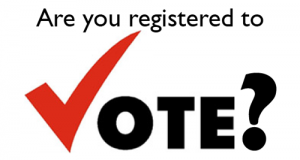I welcome the declaration last week of a climate and biodiversity emergency which follows the culmination of sustained pressure from opposition parties in the Dáil since February 2016. The declaration is as a result of a range of amendments tabled by all opposition parties, which left the government with little choice but to declare an emergency. The amendments were tabled in response to the stark evidence that there is only a small window of time to take meaningful action.
The most recent report by Intergovernmental Science-Policy Platform on Biodiversity and Ecosystem Services (IPBES) leaves little room for doubt in setting out significant loss of biodiversity. The report finds that approximately 1 million animal and plant species are now threatened with extinction, many within decades, more than ever before in human history. This report follows on foot of numerous other reports including from the UN, the Wold Wildlife Federation, the Citizen’s Assembly, the Joint Committee on Climate Action, all calling for urgent action to tackle climate change.
Significantly, and notwithstanding this range of reports, it took the visual imagery of children protesting on the streets to force the situation. Indeed, parallel to the children’s protest, we have had repeated confirmation from the EPA and the Climate Advisory Council that we are not going to meet our emissions targets.
Following on from that declaration last Thursday I raised the matter with An Taoiseach in the Dáil on Tuesday, telling him that it’s one thing to declare an emergency, which is welcome, but it is essential to outline the urgent steps that will be taken and the timeframe for implementation.
In that context, and following on from a specific recommendation (6C) of the Report of the Climate Action Committee, I asked the government to choose Galway and its regional hinterland as a blueprint for other cities in relation to climate mitigation measures.
Galway is one of five cities identified in the National Planning Framework destined to increase its population by 50% by 2040. In contrast to the other cities however, Galway’s traffic congestion is at crisis point and is interfering with the competitiveness of the city. The projected growth, while welcome, will clearly intensify the crisis unless there is an overall masterplan for sustainable development. Recognition in that masterplan must be given to the interconnectedness between housing development, public transport and biodiversity. It is welcome that a taskforce has been set up to deal with the housing crisis but that cannot function in a vacuum; indeed, the proposed growth of Galway city is to take place within the footprint of the city which gives an added impetus for an integrated public transport system.
In this regard, clearly and once again, the people are streets ahead of the government and have asked for a sustainable solution to the traffic congestion. Over 22,000 people in Galway signed a petition calling on the government to undertake a feasibility study in relation to the roll out of a light rail system for Galway. Moreover, the publication by the City Council of a draft Climate Action Plan is to be welcomed, but if it is to have any effect it must include public transport, housing fit for the 21st Century and the appointment of a biodiversity officer in the Council.



